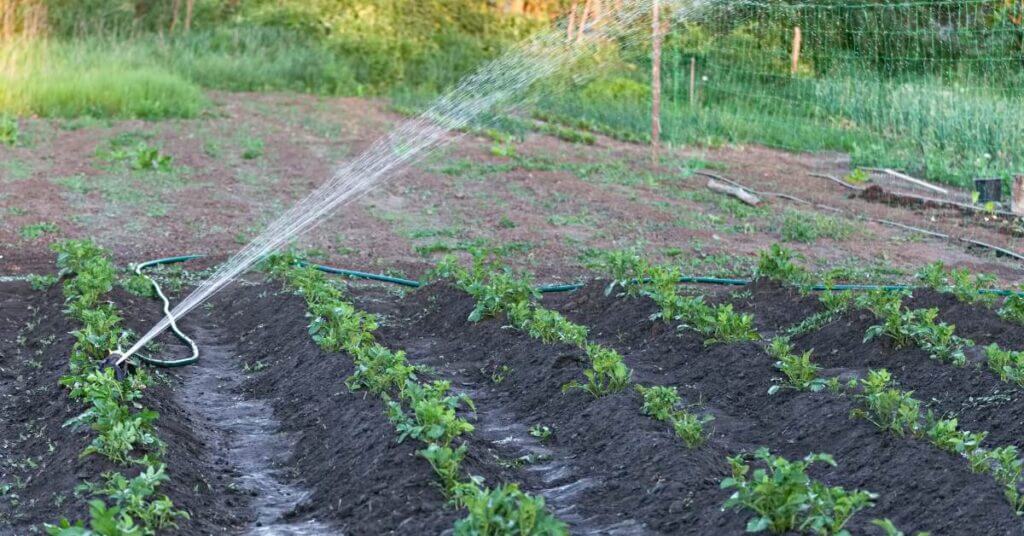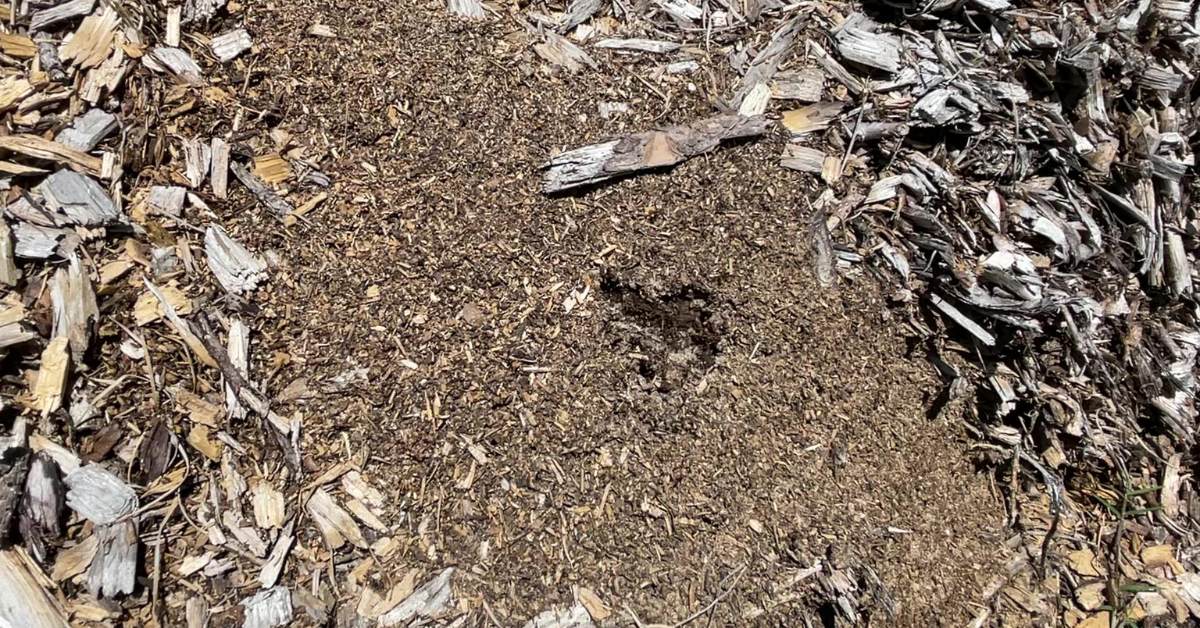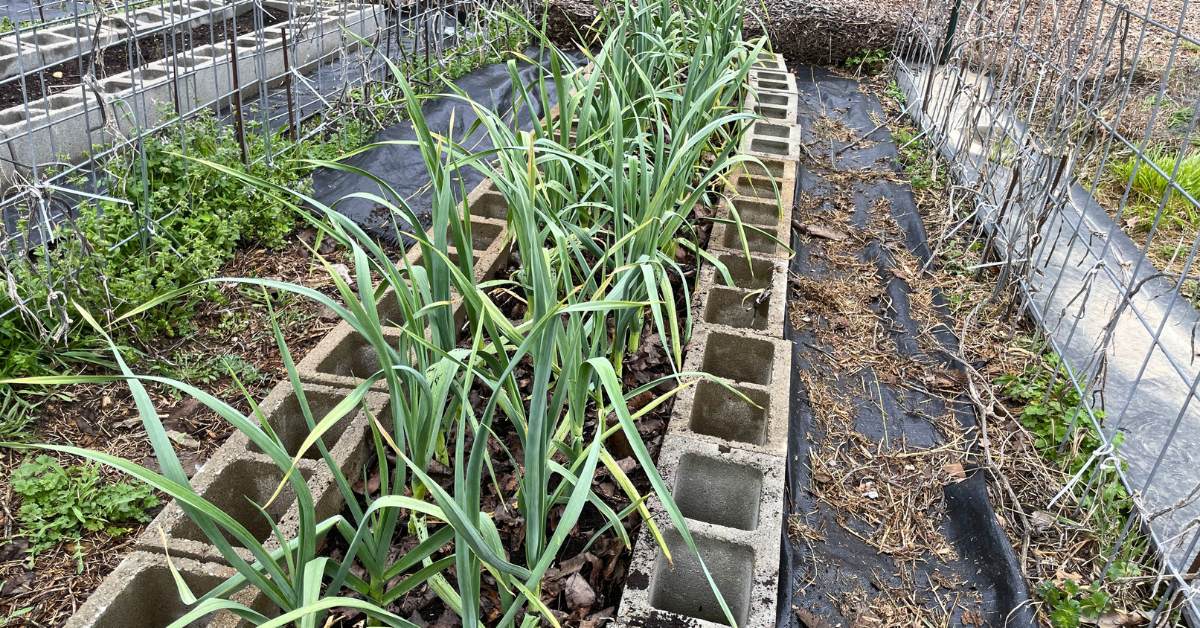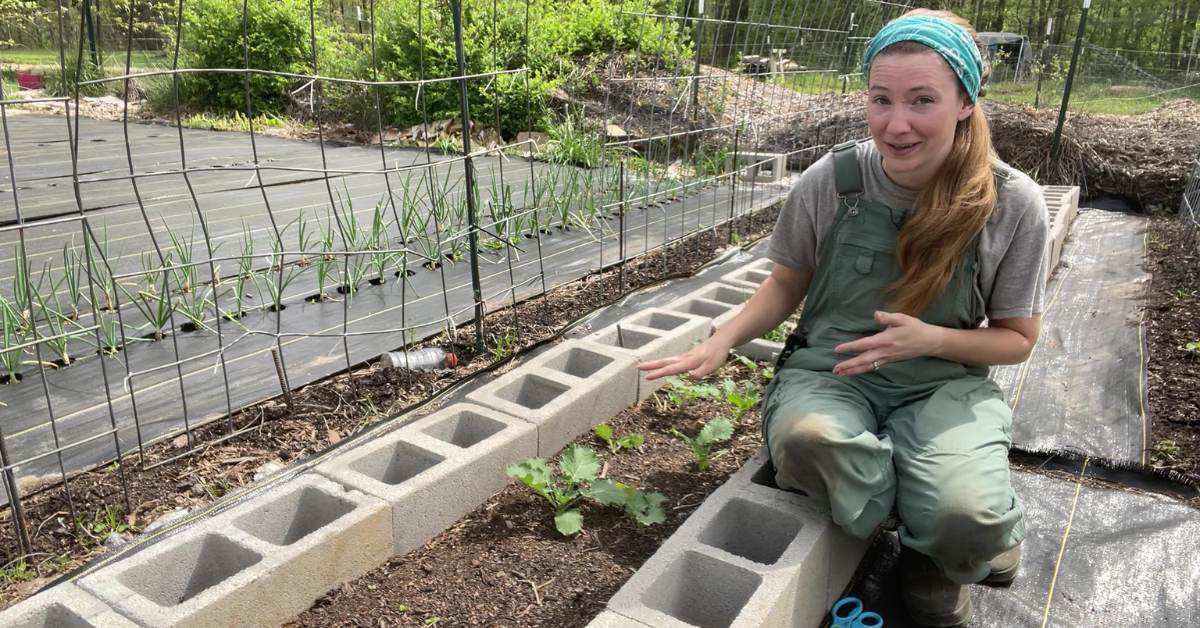Since potatoes are a root crop, it can be hard to monitor their water requirements.
While potatoes do have signs that indicate they need (or don’t need) water, they’re not as obvious as other plants.
In this guide, I’ll aim to answer all of your potato watering questions—and probably give you way more info than you ever wanted on potato growing. (Ha!)
How Much Water Potatoes Need Each Week
Potato plants thrive best when they receive around 1-2 inches of water weekly.
That said, soil types (and temperatures) play a crucial role; sandy soils require more frequent watering to maintain consistent soil moisture. Weather conditions such as high humidity or a spate of wet weather can alter these needs significantly.
Ensuring your spuds get plenty of water without overdoing it is a balancing act that requires attention to these changing factors.
I recommend keeping a rain gauge handy. This will give you a clear idea of how much natural precipitation your garden receives, helping you adjust your watering schedule accordingly.
Get our in-depth guide to growing potatoes from potatoes (whether from seed potatoes or grocery-store varieties).
How Often to Water Your Potato Plants
Here lies the crux of potato gardening—striking the perfect balance. Too little water and your tubers remain undersized; a deluge, however, invites a host of woes.
The goal for every potato grower is consistent moisture—a golden rule that steers you clear of both parched earth and soggy soil.
As varied as potato varieties are, so are their thirsts. Soil type—from sandy soils to heavy clay—plays a pivotal role, as does the fickle nature of our weather.
In weeks where rain forgets your patch of land, you’ll need to step in (even if that means watering every other day).

Dream of Filling Your Pantry with Homegrown Staples?
Plan your garden with our FREE PRINTABLE—Staples Garden: What to Plant to Feed Your Family for a Year!
Does It Matter What Time of Day You Water?
Wondering whether the timing of watering affects the potato plants’ health? Yes, it does.
Early morning is prime time for watering your spuds.
This watering schedule allows plants to absorb moisture before the heat of the day sets in. Midday watering often results in rapid evaporation, leaving your plants thirsty.
Evening watering was once thought to be beneficial, but we’ve since learned it retains too much moisture overnight.
(And, as you probably know by now, such conditions are a playground for diseases, including early and late blight.)
Being strategic about watering times not only safeguards your potatoes but also ensures their growth thrives in well-drained soil with just the right amount of water.
Best Options for Watering Potatoes
Potatoes are easy to grow, so watering potatoes might seem like a no-brainer, but it still calls for a strategy if you’re going for high yields.
- Sprinklers cast a wide net, delivering plenty of water across your sandy soils or heavy clay soil alike. They can help you get a head start in early spring but beware. Wet foliage invites early blight and late blight, foes of the humble spud.
- Drip irrigation whispers promises of precision. It targets the base of the plants, supplying consistent moisture while keeping the tops dry. This method tends to provide the best results with minimal disease risk.
- Water hose with a spray nozzle comes in handy for targeted action. This tool helps you provide just the right inch of water without upsetting your soil’s balance.
Of these, I highly recommend either drip irrigation or a careful hand with the water hose, but let’s take a closer look at each.
Sprinkler
A sprinkler system offers a straightforward approach to keeping your potato plants hydrated. By scattering droplets over a wide area, it ensures that no plant goes thirsty. This method supports high yields by uniformly distributing moisture.
But there’s a catch.
Soil surface wetness lingers post-sprinkling, setting a stage for diseases that thrive in moisture-rich environments.
So, while sprinklers make water distribution effortless, they demand vigilance. You’ll want to observe your plants regularly for signs of overwatering or disease.
Drip Irrigation
Drip irrigation emerges as a stellar candidate for watering your potato plants. This method drastically reduces water usage, ensuring that each drop goes directly to where it’s needed most—the roots.
Unlike sprinklers, which can disperse water unevenly, drip systems offer the precision that sandy soils and high yields demand.
Prices pulled from the Amazon Product Advertising API on:
Product prices and availability are accurate as of the date/time indicated and are subject to change. Any price and availability information displayed on [relevant Amazon Site(s), as applicable] at the time of purchase will apply to the purchase of this product.
There’s more to it, however.
Drip irrigation also minimizes the risk of diseases that thrive on wet foliage. By keeping the tops of the plants dry and focusing water at the base, your potatoes get ample moisture without exposing leaves to unnecessary risks.
If you want to maximize water efficiency, drip irrigation is unparalleled.
Water Hose with Spray Nozzle
Using a water hose fitted with a spray nozzle can transform the chore of watering your plants because you can control the water flow.
For instance, you can use a gentle mist to reach the soil without displacing it or damaging young plants.
(Remember, potatoes benefit from moisture directed at their base, so aim there.)
Prices pulled from the Amazon Product Advertising API on:
Product prices and availability are accurate as of the date/time indicated and are subject to change. Any price and availability information displayed on [relevant Amazon Site(s), as applicable] at the time of purchase will apply to the purchase of this product.
On the flip side, you can use the higher-powered spray settings to reach plants far away.
As a bonus, focusing water only where needed conserves this precious resource, which is a win-win.
Do Potatoes Like Wet or Dry Soil?
Potato plants love soil that walks a fine line between moisture and drainage. (For all the details, check out this guide to the best soil for potatoes.)
They thrive in conditions where the soil remains consistently moist, ensuring their roots can absorb plenty of water without becoming waterlogged.
Well-drained soil is their sanctuary, providing the perfect environment for growth. If you have heavy clay soil, waterlogging can be an issue leading to root rot and poor tuber development.
If you have such soil, be sure to amend it with plenty of organic matter to improve drainage.
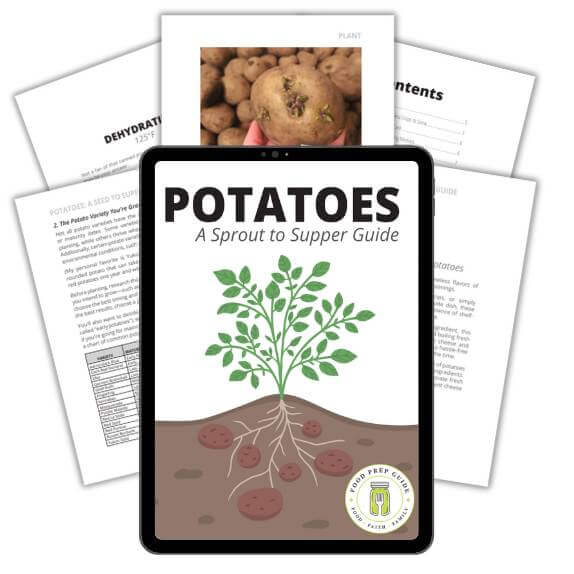
Master Potatoes From Seed to Table
Get growing & preserving faster with no-fluff tutorials for every step from plant to plate!
Do Potatoes Take a Lot of Water to Grow?
Potato plants do have a notable thirst, particularly during their tuber-swelling phase. Factors like ultra sandy soils and a hot climate can cause these plants to crave even more water.
(Also, if you planted your potatoes too close together, they’ll compete for water, so you would need to water more often. Here’s our guide to ideal potato spacing.)
Compared to plants that thrive in clay soil and under cooler conditions, potatoes will need a more generous water supply if your growing season enters early summer (and are exposed to the high temps that come along with it).
Here’s how long it takes for potatoes to grow to help you plan your planting window.
Remember, whether it’s early spring or the heat of early summer, maintaining the right balance of moisture is crucial.
Can You Overwater Potatoes?
Yes, too much moisture spells trouble for your spuds. Overwatering invites pesky root rot, turning your hard-earned harvest into a soggy mess of misshapen tubers.

Watch for signs of waterlogged soil like leaves turning yellow.
(That said, potato leaves do yellow and die back when ready to harvest, so if this occurs at the end of your growing window, it’s just time to harvest.)
If you misjudge the discoloration and harvest them too early, that’s okay … you’ll just enjoy baby or “new” potatoes.
Can Potato Plants Survive Just on Rain Water?
If potato plants could thrive on rainwater alone, that would certainly make our jobs easier. If you’ve ever found yourself gazing skyward, hoping for just an inch of water to save you hauling out the garden hose, you’re not alone.
Rain patterns, however, are unpredictable. One week you could be watching your rain gauge fill up, only to spend the next 5 days under a cloudless sky.
Remember, soil type plays a crucial role in this equation. Sandy soils drain rapidly, requiring more frequent watering.
If you planted your spuds in such soil, relying on rain might leave them too thirsty to thrive.
On the other hand, heavy clay soil retains moisture longer. Yet, in both cases, leaving your plants at the mercy of weather patterns is risky. A sudden dry spell or too much rain can spell trouble for your crop.
Consistency is key to growing robust potato plants. A balanced watering schedule ensures that your spuds receive 1-2 inches of water weekly, promoting steady growth.
Whether it’s through a gentle sprinkle from your water hose or a well-timed drip irrigation system, what matters most is keeping the soil evenly moist but not waterlogged.
If you’re still in the research phase and haven’t planted your potatoes yet, be sure to check out our guide on timing your planting.


